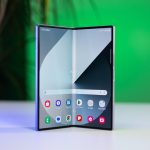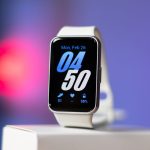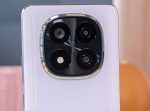When you buy through our links, we may earn money from our affiliate partners. Learn more.
Sony
- CES 2021 is officially over, meaning it’s time to decide which products were the best of the show.
- Our favorite products shown at CES 2021 include rollable phone displays from LG and TCL, a cleaning robot from Samsung, and probably the most technologically advanced face mask to date.
- Visit Insider Reviews’ homepage for more stories and buying advice.
With CES 2021‘s all-digital event having now come and gone, it’s time at last for our favorite part of the show: awards. We’ve seen dozens of products over the past four days from in front of our screens, and now we’ve collected what we think are the best of the show across 15 different product categories.
From the best smartphone of the show to the best health-focused device, this is the cream of the crop when it comes to CES announcements and reveals. We’ve seen a tech-filled face mask that solves a lot of the problems of normal masks, as well as rollable smartphone displays.
We also spotted major advancements in the smart home from a voice-activated fridge to a home-cleaning robot that’s less like a Roomba and more like a Rosie of “The Jetsons” fame. It’s innovations like these that are not only available today, but will be the foundation of huge advancements in daily convenience and general coolness.
Some of these products are available for either preorder or direct purchase, while others will be launching over the coming months. But, more importantly, they’ve all earned our seal of approval as products to keep an eye on this year as potential buys.
HP
Many companies are tailoring their products for a work-from-home life at CES 2021, and that’s especially true with HP’s Elite Dragonfly Max.
The business-focused laptop has features that are optimized for our new remote work routines, like four wide-range microphones that use artificial intelligence to optimize audio and a 5-megapixel camera. Considering most laptop webcams aren’t very good, and it’s unusual for a laptop to come with that many microphones, the HP Elite Dragonfly Max seems well-positioned to boost the quality of your daily Zoom video meetings.
In yet another sign that the Max is built with remote work in mind, it also has EyeSafe technology to reduce eye strain after prolonged use — another common theme among this year’s laptops at CES.
Otherwise, the HP Elite Dragonfly Max, which launches in January for an unannounced price, runs on 11th-generation Intel processors, features a 13.3-inch screen and comes with the option for 5G connectivity. — Lisa Eadicicco, Senior Tech Correspondent
Best phone: LG and TCL’s rollable smartphones
YouTube/LG Global
Smartphone makers are still figuring out the next big thing for smartphone design, and CES 2021 shows that LG and TCL are advancing on rollable smartphone displays instead of foldable ones.
The concept is the same as foldable displays — to make a smartphone screen bigger than normal when you want the extra screen real estate. The way in which these rollable smartphones deliver on that concept is completely different to foldable phones, and fairly simple to grasp. Inside the phones is a rolled up OLED screen that unfurls, allowing the phones to keep a similar size and shape of a traditional smartphone. The mechanisms to expand the phones as the screen unfurls from their enclosure, however, will undoubtedly be incredibly complex, and there will be many questions to answer regarding their reliability.
Little is known so far about LG and TCL’s smartphones with rollable screens, but rumors suggest that LG plans to launch its own model sometime this year. Regardless, these are certainly the most impressive and exciting phones of CES 2021. — Antonio Villas-Boas, Senior Tech Reporter
Best high-end TV: Samsung Micro LED 4K TV
Samsung
Samsung has been showing off Micro LEDs at CES for the last few years, and the advanced display technology never fails to impress. That said, the company has yet to actually release a consumer Micro LED 4K TV. For 2021, that’s finally going to change.
Micro LED 4K TVs in 88-, 99-, and 110-inch screen sizes are set to hit the market by the end of the year. Yes, this first wave will likely be prohibitively expensive for anyone but those with the deepest of pockets — my best guess is at least $30,000 for the smallest size — but the fact that the tech is starting to scale down to the consumer level is very exciting. Why? Because Micro LED TVs have the potential to combine everything we love about the pixel-level contrast of OLED TVs with the high brightness of QLED TVs.
We got a first look at the 110-inch Samsung Micro LED last week, and if prices eventually come down to a reasonable range, we think this tech could be the future of TV. — Steven Cohen, Tech Editor
Best 4K TV: LG G1 and Sony A90J OLED TVs
Sony
OLED is our favorite display technology for picture quality because OLED panels offer the best contrast and viewing angles on the market right now. That said, they have one drawback compared to competing QLED TVs: they can’t get as bright.
This makes OLEDs less suited for rooms that let in a lot of light, and it can make certain high dynamic range (HDR) videos look dimmer than they would on a QLED. This year, however, Sony and LG have made key improvements to their flagship OLEDs in order to deliver higher brightness than previous models.
We don’t know exactly how much brighter they’ll be just yet, but the upgrade could help cement the upcoming Sony A90J and LG G1 as top 4K TV contenders. In addition to OLED picture performance, the LG G1 also features an incredibly thin “Gallery” design that enables it to be mounted flush to a wall. Meanwhile, the Sony A90J uses the company’s Acoustic Surface Audio+ tech to create sound from the screen itself. Pricing hasn’t been announced yet, but new TV models usually start hitting stores in the spring. — Steven Cohen, Tech Editor
Best gaming device: LG 42-inch OLED displays
LG
While monitor and TV manufacturers are still working to produce models that make the most of the newly released PlayStation 5 and Xbox Series X, LG’s OLED TVs have become an increasingly popular choice for PC and console gamers who want the latest features, like adaptive refresh rate, high dynamic range, and low input latency.
LG Display’s newly announced 42-inch OLED TV panel is the company’s smallest OLED yet, and it will undoubtedly compete with premium gaming monitors when it’s released. LG’s CX OLED is already our top rated OLED TV with sizes starting at 48 inches, and a 42-inch display will be an ideal fit for a monitor replacement or bedroom gaming setup. The 42-inch panels are expected to go into production this year, but it’s not yet clear when a consumer model will be available to buy. —Kevin Webb, Tech Reporter
Best soundbar: TCL Alto R1 Wireless Soundbar
TCL
Soundbars are generally designed to offer a more convenient audio solution than separate speakers or surround sound setups. Though there are some impressive high-end models with advanced audio features like Dolby Atmos, many buyers turn to soundbars primarily for their simplicity. TCL’s new Alto R1 aims to make setup easier than ever before.
The soundbar is the first to use Roku’s new Wi-Fi audio system, enabling the device to wirelessly connect to a Roku TV. You just need to plug the power cable in and then turn the bar and TV on. From there, the soundbar is designed to seamlessly pair and communicate with a Roku TV without any additional wires. This also makes it easy to use one remote and on-screen interface for the display and soundbar. Roku says the tech should prevent any audio syncing issues as well.
Though we’ll need to get hands-on with the Alto R1 to see how well the wireless tech really works, the feature looks very promising. The soundbar is set to launch later this year, but there’s no word yet on an exact release date or price. — Steven Cohen, Tech Editor
Best robot: Samsung Bot Handy
Samsung
Robots are a common sight at CES events, and companies simply won’t stop showing off their robo-tech. This year at CES 2021, the best robot we came across is Samsung’s Bot Handy, It’s an upright robot with a rolling base, and it has a long mechanical arm equipped with a clamp to pick things up.
The Bot Handy is designed to help with house chores, like cleaning up messy rooms, picking up and throwing away trash, and putting dirty laundry into washing machines. It’s even delicate enough to put dirty dishes into the dishwasher. But, why stop there? The Bot Handy will truly prove its worth when it pours you a glass of wine. Good robot.
To perform these complex tasks, the Bot Handy relies on AI and delicate mechanics to apply an appropriate amount of force with its clamp.
The Bot Handy is still in development with no definitive price or sales date at the moment. However, Samsung will have its smart robo-vacuum, called the JetBot 90 AI+, available this year. It’s essentially a smarter and better vacuuming robot that doubles as a travelling security camera. Unfortunately, we don’t know how much the JetBot will cost yet, or exactly when it’ll be released. — Antonio Villas-Boas, Senior Tech Reporter
Best smartwatch: Skagen Jorn Hybrid HR
Skagen
Skagen already makes one of our favorite minimalist smartwatches, and now at CES 2021 the Fossil-owned brand is launching a new wearable that should blend in even more seamlessly as a timepiece. The $195 Skagen Jorn Hybrid HR, as its name suggests, is a hybrid smartwatch that combines the look of a classic watch with the connectivity and health-tracking features of a smartwatch.
The Skagen Jorn Hybrid HR’s signature feature is its always-on e-ink display, which should offer two-week-long battery life if it lives up to its claims. It also includes health features like a heart rate monitor and activity and sleep tracking, and can deliver notifications from your phone to your wrist. The only major feature it appears to be missing that’s usually standard on smartwatches is built-in GPS. Instead, the Skagen Jorn HR will connect to your phone’s GPS when needed.
All told, the Skagen Jorn Hybrid HR looks like a promising new watch for those with a preference for sleek, minimalist looks and long battery life in a smartwatch. — Lisa Eadicicco, Senior Tech Correspondent
Best health device: Razer Project Hazel
Razer
CES is always chock full of wearable technology and wellness gadgets, but the COVID-19 pandemic has put health in focus more than ever in 2021. One of the most promising devices at this year’s CES is Razer’s Project Hazel, which aims to fix many of the shortcomings and inconveniences that come with wearing masks today.
Project Hazel is an N95 respirator prototype that comes with a special UV light charging case for disinfection, a built-in microphone and amplifier to make it easier to speak loudly while wearing the mask, and clear design so that others can actually see your mouth when worn. And of course, in typical Razer style, the mask also lights up automatically in the dark. — Lisa Eadicicco, Senior Tech Correspondent
Best smart home device: LG InstaView ThinQ Refrigerator with Voice Recognition
Synergy Appliances
Voice recognition is now available on refrigerators, obviously, and as it should be. The LG InstaView ThinQ Refrigerator with Voice Recognition, which we’ll call “InstaView” from now on, can open its doors with a simple voice command — something no other refrigerator can do.
This kind of device is exactly what CES is best at showing. The InstaView sounds excessive and superfluous, because it is. But, so does all the futuristic stuff you’ve seen on modern TV shows and movies. And, if you’ve ever wanted to live in that kind of futuristic setting, you can’t ignore things like the InstaView. Indeed, the InstaView is another notch in our progress towards a cool future where our fixtures and appliances listen to our voice commands rather than using our hands like cavepeople.
LG has a more practical implication for the InstaView. The company says the voice-activated refrigerator that can open its doors on your voice command will help with the “struggle to open the refrigerator door when their hands are full of groceries.” Scoff all you like, but it’s a legitimate “thing” to improve — placing a large object that needs two hands into your refrigerator is a task that needs planning. You need to open the refrigerator door first and hope it stays open while you fetch the large food item. People in the future don’t have that problem because they have the InstaView.
And, of course, you can ask InstaView about what’s coming up in your calendar and check the status of the ice and water dispensers. Although, it’s unclear if InstaView will talk back or display the information on a screen.
But, let’s face it: It’s all about the futuristic feels, really.
So far, InstaView doesn’t use a popular smart assistant like Amazon’s Alexa or Google’s Assistant. Instead, it uses LG’s own ThinQ AI, which should be perfectly capable of understanding when you want it to open its doors. — Antonio Villas-Boas, Senior Tech Reporter
Best home appliance: Kohler Stillness Bath
Kohler
Baths are kind of gross, but Kohler’s Stillness tub is more about recreating an at-home spa experience than de-griming you. It starts at $6,000 and comes to $16,000 with all the trimmings, so it’s ridiculous and over the top. It takes inspiration from Japanese soaking baths, with a special hinoki wood moat that catches water as it gently spills over its sides. Soft LED lighting illuminates it from below, and the experience tower releases a fine fog and aromas from essential oils. The bath is also voice-activated, so you can ask it to fill to your desired depth and temperature.
Put it all together, and it’s almost enough to make you forget that you just sunk $16k into a bathtub, almost. — Jenny McGrath, Buying Guides Editor
Best small home appliance: Yves Saint Laurent Rouge Sur Mesure Powered by Perso
Yves Saint Laurent
Last year, L’Oreal introduced its personal beauty device, the Perso. It was still unclear when it would come to market and how much it would cost. Now we know. You can preorder the Yves Saint Laurent Rouge Sur Mesure for $299.99 right now.
The device is focused on creating unique lipstick shades. It draws the liquid from three tubes of YSL Velvet Cream Matte Finish. The result will depend on the amount it’s pulled from each. The app can help you try to recreate a color you see on Instagram, too. If it’s too red or orange, you can try again without wasting a ton of product. L’Oreal also hopes it will cut down on packing, since you can get so many colors from just a few cartridges.
It’s a pricey gadget, but I’m looking forward to what it means for the other version of the Perso I saw at CES last year. The skincare model mixes lotions and serums for you, factoring in things like the weather — maybe you need more sunscreen on a sunny day — and your preferences. Its design helps keep delicate ingredients out of contact with air. Of course, it does mean you’ll have to stick to products from the L’Oreal family of brands, which might be a deal-breaker for a lot of people who like to buy from an array of companies.
L’Oreal said the skincare Perso should hit the market later this year, though pricing is still unavailable. — Jenny McGrath, Buying Guides Editor
Best fitness tech: Ultrahuman
Ultrahuman
Digital fitness is in the midst of a major moment, as at-home workouts are now the norm instead of some time-constrained exception. Because of this, fitness classes are everywhere; they’re live-streamed on Instagram, produced as a series for YouTube, and downloadable on your smartphone. It should come as no surprise then that CES 2021 (a show that also embraced a fully digital presentation) was chock-full of this new wave of keeping fit.
At the forefront of the fitness innovation displayed at the show was Ultrahuman, a self-described “masterclass-like” workout app that aims to connect users with world-class athletes, neuroscientists, psychologists, and artists all in the name of improving one’s heath, wellness, and fitness.
Though the analogy to Masterclass seems gimmicky, Ultrahuman does at least have the credentials to back it up. Included in its roster of experts are Crossfit champion Kara Saunders, bodybuilder and athlete Kris Gethin, and fitness influencers, Amanda Cerny and Johannes Bartl. And that just skims the surface of what the brand has planned — its site says it intends to have “100+ of the world’s best athletes.”
But what also makes Ultrahuman intriguing is its concept. The brand aims to teach subscribers everything from mindfulness and meditation to the impact of sleep and the science of working out. There’s even content around how to boost productivity and how to improve focus. The classes are intensive, not unlike what Masterclass offers, and come loaded with expert- and doctor-approved lessons (most of which are developed by the expert or doctor actually leading the class). These include 14-week marathon training classes, a group of sessions on developing a balanced mind, and strength training basics, among many others. The range of classes offered seem fit for people of literally any fitness level or skill, too.
The platform was designed specifically for the Apple Watch and any iOS-compatible device, but also works on Android devices via an Android smartphone or through a Google Chromecast. Ultrahuman also offers a tiered subscription plan, so users can choose to pay either $14 per month, $41 every six months, or $75 a year for full access to the platform.
The app is available now on both the Apple App Store and the Google Play Store. — Rick Stella, Health & Fitness Editor
Best auto tech: Mercedes-Benz MBUX Hyperscreen
Merceds-Benz
There were plenty of futuristic car tech unveiled, but most were more fantasy than reality. One that is actually coming is Mercedes-Benz’s next-gen vehicle infotainment system, the MBUX Hyperscreen.
The highlight is a high-resolution 56-inch OLED display that spans across the entire dashboard. Technically divided into three components — digital gauge for the driver, a central 17.7-inch touchscreen, and a screen for the front passenger — the Hyperscreen incorporates artificial intelligence to help the driver adjust controls without taking hands off the wheel or eyes off the road. While such telematics aren’t entirely revolutionary, the Hyperscreen digitizes nearly every control — something we will start to see more and more in new cars.
The MBUX Hyperscreen will debut in the all-electric Mercedes EQS this spring. — Les Shu, Senior Guides Editor
Best photography device: Sony FE 35mm F1.4 G Master Lens
Sony
Finding a new camera at CES to write about is as elusive as spotting a rare bird, as few companies use the tech conference to launch new products — compared to 15 years ago when every camera maker would unveil multiple models. But, that doesn’t mean CES is entirely void of camera and photo-related products.
While not an official CES release, Sony this week announced the FE 35mm F1.4 G Master lens for its highly lauded full-frame mirrorless cameras. A compact lens designed for shooting photos and videos, it weighs 18.5 ounces yet has the complex optical construction and fast f/1.4 aperture to capture high-quality images with sharpness and beautiful bokeh. Although we haven’t used this particular lens, we have used other fast G Master lenses. Some of the best images we’ve ever taken were with a G Master lens.
The lens goes on sale in February for $1,400. — Les Shu, Senior Guides Editor
Powered by WPeMatico





